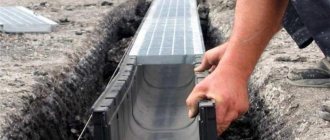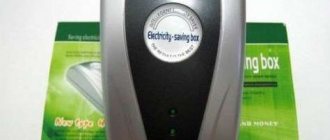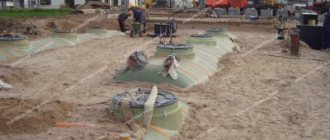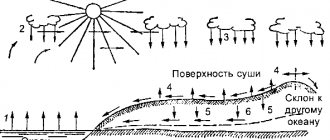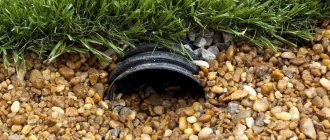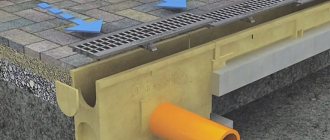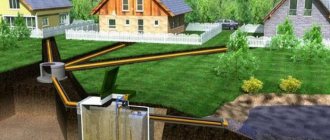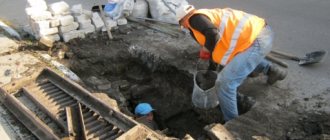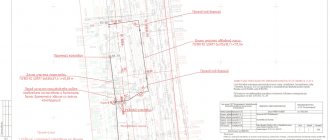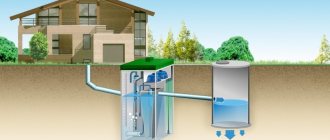This type of sewerage system is a complex engineering device, so accurate calculation of storm sewerage during its design is of no small importance. In general, the installation of such a system requires an integrated approach; in the process, it is necessary to comply with certain technical requirements. The project must be approved by the sanitary and epidemiological service, the fisheries protection and water protection and regulation authorities.
Careful calculation of parameters is the key to high-quality operation of storm drains
Design
It’s worth noting right away that if you have never encountered the drawing up of diagrams and calculations of complex systems, then it is better to entrust this difficult task to professionals.
However, you should know about the basic rules for drawing up technical specifications for development.
Storm drain project
Any calculation of storm sewerage must be carried out in accordance with a number of regulatory documents.
One of those that is in force today is SNiP 2.04.03-85.
In accordance with this provision, a system for removing excess moisture from the land is calculated.
Here you will find:
Storm sewer calculation
- formulas used for calculations;
- instructions on the quality of materials to be used;
- technologies for conducting installation work;
- slope values of the sewer system, etc.
Building rules and regulations are not the only document that needs to be followed when calculating rainwater drainage.
Regulatory acts also include GOST 3634-99 and GOST 21.604-82.
One of the main rules for drawing up project documentation is its approval by the authorized supervisory authorities.
To ensure that no inconsistencies arise, you should immediately contact an organization that has the licensed right to draw up a storm sewer project for you.
By the way, this same organization has the right to monitor compliance with all technical requirements during the construction of the drainage system.
Storm drain project example
Today there are many automated design programs.
If you want to design and calculate a storm drain with your own hands, you can use the following programs:
Project made in Autodesk Architectural Desktop
- Autodesk Architectural Desktop - used in the field of industrial and civil construction;
- Autodesk Building Systems - it is designed for designing engineering networks such as ventilation, heating, electricity, and, of course, sewerage.
Calculation of parameters
There is no need to be afraid that the water in the stormwater pipes may freeze, but this is only provided that it does not stagnate.
To do this, when installing pipes, their slope is ensured.
So, at what depth should the storm pipeline be located?
Despite the popularity of the question, SNiP does not provide clear recommendations.
This is explained by the fact that slightly different climatic conditions prevail in different regions of the country.
Storm drain depth
If there is no data on how external networks are operated in your region, then you can focus on the diameter of the pipes.
For example, when using elements with a cross-section of less than 0.5 m, they are laid at least 30 cm deep.
If we are talking about pipes of a significantly larger diameter (>0.5 m), then the laying level to the surface should be at least 70 cm.
There are certain technical and statistical calculations that determine the minimum depth of sewer installation.
When calculating rainfall, the amount of precipitation is taken into account
If you look at any example of a storm sewer calculation, you will find that it contains an indicator of melt water.
We are talking about the average statistical indicator of the amount of precipitation in a certain area.
To determine this indicator, a simplified formula is used, which uses the following values:
- Q is the volume to be removed from the site;
- q20 - the amount of precipitation in a particular region (up-to-date information can be obtained from the weather service or taken from SNiP 2.04.03-85);
- F—area of serviced surfaces;
- ¥ is a coefficient that takes into account the coating material with which the site is equipped or the house is covered (for crushed stone and gravel it is 0.4, for concrete 0.85, for asphalt coating 0.95, for roofing materials the coefficient is 1).
The formula itself is as follows:
Q=q20 x F x ¥.
Types of slope of storm sewer pipes
Do not also forget about calculating the required pipe slope. If it is selected correctly, then water will flow freely under the influence of the laws of physics.
The slope indicator depends directly on the diameter of the pipes used.
For those with a cross-section of 20 cm, a coefficient of 0.007 is used (this is 7 mm/m), and for 15 cm pipes the slope is 8 cm per linear meter.
If we talk about the open type of storm drain, then for such channels a coefficient of 0.003-0.005 is used.
At the junction of pipes with storm wells and storm water inlets, the slope is 2 cm/m.
Types of storm drainage
Before you start making calculations, you should decide on the type of storm drain. Advice! Despite the fact that deep drainage systems and storm sewers are often built in parallel, according to SNiP requirements they should not be combined. They are placed in parallel, one above the other, and the stormwater system should be located above the drainage system.
Types of storm drains by method of water drainage
There are three types of rainwater drainage systems:
- Closed drainage systems. This is the most difficult option; to implement it, you need to perform a serious hydraulic calculation in order to choose the correct pipe diameter. In this case, water is collected in special collections - rainwater inlets, trays. Then the collected moisture enters a pipe system through which it moves by gravity or using pumping stations. Water enters collectors, from where it is discharged outside the site; an example of a possible discharge direction is ponds, ravines or drainage installations.
Advice! Closed-type storm drainage using large-diameter pipes is most often installed on city streets or in industrial enterprises. But sometimes this drainage option is best suited for private areas. The most striking example of the expediency of such a choice is that the site has a large area.
- Open drains. This option, on the contrary, is the simplest. In this case, moisture is collected and removed using a system of trays installed in ditches dug at an angle to the collector. The trays are covered with decorative removable grilles on top.
- Mixed drainage systems. This option for arranging the system involves installing elements of both types mentioned above. Mixed water pipelines are built to reduce the costs of constructing closed systems.
If you plan to build a closed or mixed type system, then for private buildings they use pipes with a diameter of 100 to 150 mm. The diameter of the pipes can be determined more accurately by calculations taking into account correction factors. When performing calculations, not only the diameter, but also the level of slope of the pipes is taken into account to ensure optimal flow speed.
Types of storm drains by type of drainage system
There are two types of system arrangement:
- Point water collection. It is carried out by installing local storm water inlets connected by pipes into a single network. You need to plan to install collection points in problem areas, for example, under drainpipes and in low spots on the property.
- Linear water collection. This option is suitable for collecting moisture from large areas, examples of such areas are asphalt areas, concrete paths, etc.
Sample Project
A storm drainage project is done in dwg format and always includes sections such as:
Example of a storm drainage project
- Total information;
- precise diagrams of sewer networks;
- site plan, which indicates the location of each element of the system;
- equipment specification in detail;
- calculation of the budget part of construction.
As a rule, for this service it is customary to contact a specialized company, where there are specialists who know how to calculate what material and in what quantity you will need to install a storm drain.
Do not forget to follow SNiP
If you want to try to cope with this task yourself, then do not forget to be guided by building codes and regulations, as well as GOSTs.
So, you have to calculate the following parameters:
- number and location of wells;
- pipe length;
- materials, alarms, sensors.
All this data can be obtained only taking into account the total catchment area, the amount of precipitation (taken from SNiP), the proximity of reservoirs, the speed of runoff, etc.
Layout drawing for storm drain
But in order to draw up the most accurate estimate for the project and understand how much money you will need to install rainwater drainage on the site, you need to find out the cost of its components.
For example, now one point water collector, which is installed under a vertical drain, costs 490 rubles, and at least 2 pieces will be required.
You will also need drainage pipes; elements with a cross-section of 110 mm, 125 mm, 160 mm, and sometimes 200 mm are most often used.
Their cost is for 1 piece. depends on the size. If you take pipes with a diameter of 110 mm and a length of 561 mm, then it will cost 65 rubles per piece, the same configuration, but with a longer length (1061 mm), will cost 120 rubles per piece.
This is what a sewer well looks like
One of the main elements of the system is the sewer well.
The cost of such plastic structures starts from 15 thousand rubles, and depends on the dimensions of the specific model.
Also remember to consider the cost of sand and crushed stone used to create a cushion at the bottom of the trench.
Today, 1 cubic meter of sand costs approximately 500 rubles, and crushed stone costs 350 rubles.
Knowing the current prices, you can easily calculate the cost of your storm drain project.
Features of the equipment and principle of operation
An integrated cleaning system is a design with several filtration components, made in a monolithic housing. The equipment includes three stages that complement each other:
- sand-oil separator;
- sorption block;
- oil and petrol separator.
Taken together, the equipment demonstrates a high result in purifying surface water from heavy contaminants, elements of petroleum products, oils, sand and soil compounds. The configuration of the equipment integrated into the system and the type of products depend on the basic purpose, the place of discharge, and the source of wastewater.
The required degree of purification and quality indicators are regulated by state standards for operational and environmental safety. To discharge the runoff passed through the system onto the terrain, sponge-fabric filters are used. Installation is carried out in special drainage ditches of the sorption compartment. To ensure discharge into water bodies for fishing and other purposes, it is necessary to use a sorbent.
Benefits of Using a Complete Stormwater Treatment System
- ease of maintenance of the device;
- installation is carried out in the shortest possible time;
- effective filtration of water entering the system;
- a housing made of resistant to mechanical loads and temperature changes guarantees the durability and reliability of the integrated storm water treatment system;
- low costs for maintaining the operation of the device;
- the ability to use filtered wastewater in various areas of the enterprise’s activities.
OP-OM
It is used when discharging treated waste into the city sewer.
Size
| Wastewater flow, l/s | Case diameter, D, mm | Case length, L, mm | Din/Dout, mm | Input/output difference, mm |
| 6 | 1600 | 4500 | 160 | 200 |
| 10 | 1600 | 6400 | 200 | 200 |
| 15 | 1800 | 6800 | 200 | 200 |
| 20 | 2000 | 6700 | 200 | 300 |
| 25 | 2000 | 8000 | 200 | 300 |
| 30 | 2300 | 6800 | 250 | 300 |
| 40 | 2300 | 8800 | 250 | 300 |
| 50 | 2300 | 10100 | 250 | 300 |
| 65 | 2300 | 12600 | 315 | 300 |
| 80 | 3000 | 9500 | 315 | 400 |
| 90 | 3000 | 11300 | 400 | 400 |
| 100 | 3000 | 13300 | 400 | 400 |
| 120 | 3200 | 13000 | 400 | 400 |
OP-OM-SB (filters)
It is used when discharging treated runoff onto terrain, into ravines, and into drainage ditches.
Dimensions
| Wastewater flow, l/s | Case diameter, D, mm | Case length, L, mm | Din/Dout, mm | Input/output difference, mm |
| 1,5 | 1200 | 4000 | 110 | 120 |
| 3 | 1200 | 4400 | 110 | 120 |
| 6 | 1600 | 5500 | 160 | 200 |
| 10 | 1600 | 6400 | 160 | 200 |
| 15 | 1800 | 6800 | 200 | 200 |
| 20 | 2000 | 6700 | 200 | 200 |
| 25 | 2000 | 8000 | 200 | 200 |
| 30 | 2000 | 8000 | 250 | 200 |
| 40 | 2300 | 7600 | 250 | 200 |
| 50 | 2300 | 8100 | 250 | 300 |
| 65 | 2300 | 9100 | 315 | 300 |
| 80 | 2300 | 11600 | 315 | 300 |
| 90 | 2300 | 12600 | 400 | 300 |
| 100 | 2300 | 13100 | 400 | 400 |
| 120 | 3000 | 11300 | 400 | 400 |
OP-OM-SB (sorbent)
It is used when discharging treated wastewater into reservoirs for various purposes.
Dimensions
| Wastewater flow, l/s | Case diameter, D, mm | Case length, L, mm | Din/Dout, mm | Input/output difference, mm |
| 1,5 | 1200 | 4000 | 110 | 120 |
| 3 | 1200 | 4400 | 110 | 120 |
| 6 | 1600 | 5500 | 160 | 200 |
| 10 | 1600 | 6400 | 160 | 200 |
| 15 | 1800 | 6800 | 200 | 200 |
| 20 | 2000 | 6700 | 200 | 200 |
| 25 | 2000 | 8000 | 200 | 200 |
| 30 | 2000 | 8000 | 250 | 200 |
| 40 | 2300 | 7600 | 250 | 200 |
| 50 | 2300 | 8100 | 250 | 300 |
| 65 | 2300 | 9100 | 315 | 300 |
| 80 | 2300 | 11600 | 315 | 300 |
| 90 | 2300 | 12600 | 400 | 300 |
| 100 | 2300 | 13100 | 400 | 400 |
| 120 | 3000 | 11300 | 400 | 400 |
